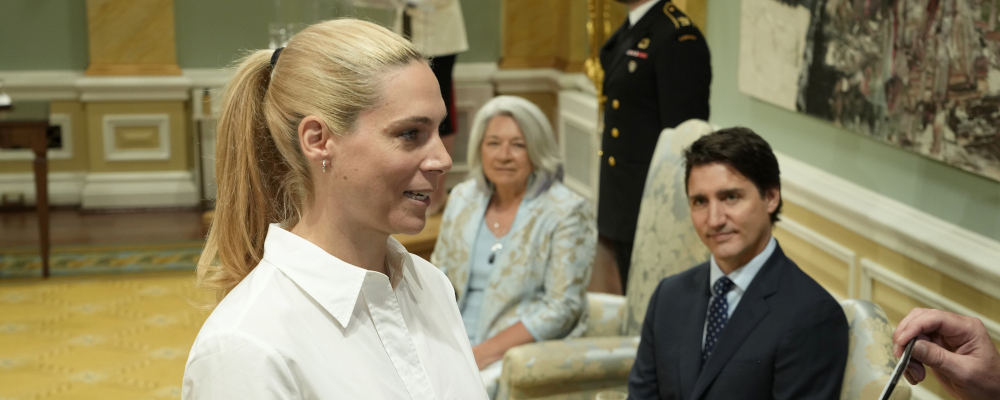The Hub has reimagined for your reading pleasure a different version of the Online News Act. Click here to read about the Horse and Buggy Act.
Late Friday afternoon, the Trudeau government released draft regulations that bring further policy expression to its controversial Bill C-18 (Online News Act).
Readers will recall that the recently-passed legislation requires that Google and Meta enter into voluntary agreements with Canadian news media organizations to “compensate” them for their content or face binding agreements imposed by the Canadian Radio-Television and Telecommunications Commission.
The much-anticipated regulations, which aim to provide greater clarity about how the legislation will be implemented, including the formula for calculating the companies’ liabilities and the parameters for their “voluntary” compliance, cannot overcome the flawed assumptions underpinning the legislation itself.
If anything, they expose an insoluble challenge for the government: prescribing in law and regulation the intricacies of business-to-business relationships effectively transform private companies into instruments of public policy which has major consequences for policy outcomes, public accountability, and the functioning of the market.
There’s a good-faith debate about whether current challenges in the world of journalism are signs of a market failure that necessitates a policy intervention or a messy yet normal market-based process of rationalizing outdated business models based on new technologies and evolving consumer preferences. We think there are useful arguments on both sides.
The government has clearly sided with the former. The fact that it itself is already providing direct subsidies to “qualified” media organizations through payroll tax relief equal to fully 25 percent of their newsroom costs is a sign that it believes there’s a need for government intervention. The twist with the Online News Act is that it effectively outsources the implementation of government policy to private platforms, including, as we’ll discuss, the selection of which media organizations ought to receive financial support.
It strikes us as a highly flawed way to solve for (perceived) inefficiencies in the market. If the government believes that there’s a role for the state to intervene in support of Canadian journalism, then it should do it. Canadians can debate the government’s decision and ultimately render their judgment as part of a future election. This is how democratic policymaking is supposed to work.
There’s something odd about outsourcing responsibility for the government’s policy decisions to two private companies based on the dubious argument that they “owe” the Canadian news media for having come to dominate the digital advertising market.
If one was to follow the government’s logic here consistently, we can envision countless instances where new start-ups that outcompete legacy players and industries could be forced to compensate those who they’ve overtaken. As we write tongue-in-cheek today at The Hub, it would be the equivalent of forcing Ford and Studebaker more than a century ago to compensate the horse and buggy industry simply because they gave consumers something better and more valuable. If we had done this, we might all be feeding horses this morning instead of relaxing from the long drive back from the cottage on the Labour Day weekend.
The “steel-manned” case on the part of the government is that the Act seeks to establish a “market mechanism” rather than solely rely on government subsidies to support the news media sector. The problem with such an argument, however, is that it conflates market-based transactions and ones mandated, overseen, and approved by the state. It’s not a “voluntary commercial agreement” if it originates and ends with the government.
The Act uses the government’s legislative and regulatory powers to essentially turn Google and Meta into instruments of public policy. Any financial agreements that they reach with publishers under the Act are hardly market arrangements since they have to conform to the government’s prescriptions and ultimately secure approval from the CRTC. Such payments should therefore be viewed as an indirect government subsidy. The only major difference with a direct subsidy is that the former depends on the legislative pen rather than the public purse.
The practical differences are otherwise mostly semantic. Just think about it. If the government legislates that the companies must enter into financial agreements with the journalism industry, and then regulates how much they must compensate the industry and the detailed parameters that dictate with whom and under what terms they must enter into agreements, and then grants itself final approval that the agreements are satisfactory based on various criteria, including if they “provide fair compensation”, “ensure an appropriate portion of the compensation is used to support the production of local, regional and national news content”, “include local and regional markets in every province and territory, anglophone and francophone communities and Black and other racialized communities”, and “ensure a significant portion of Indigenous news business”, it’s difficult to characterize such a policy regime as anything but an indirect government subsidy to particular media outlets. Google and Meta may in theory be writing the cheques, but Ottawa is, for all intents and purposes, deciding where they’re going.
This matters of course because it has consequences for public accountability and government transparency. But, more practically, it also explains some of the inherent flaws in the draft regulations themselves.
Start with the funding formula. The formula is there because the companies complained that they didn’t want an indeterminate liability with the industry. Fair enough. Yet the proposed formula contains such odd assumptions that we cannot help but think it was reverse engineered to produce a particular outcome.
Under the federal government’s current policy model for supporting the journalism industry, its labour tax credit again provides up to 25 percent of payroll costs for media organizations which have been vetted and approved by a government-appointed committee of journalists. The formula set out in the regulations just happens to result in nearly matching support from Google and Meta. What a coincidence.
In order to reach that outcome, the regulations have to account for the companies’ global revenues and Canada’s share of global GDP and 4-percent contribution rate from the platforms which it calls “broadly consistent” with the Australian model. It’s far from obvious why the formula wouldn’t be limited to Google and Meta’s Canadian-based revenues and based on the journalism sector’s share of Canada’s GDP. The result is that the companies are in theory responsible to compensate the Canadian news media with revenues earned elsewhere based on economic activity created in the oil and gas sector or manufacturing or retail or any other part of the national economy.
It’s such an odd methodology that we assume the real goal here is to produce an outcome that essentially doubles the level of public subsidies to media organizations to almost half of all newsroom payroll costs. If so, the government should have just made the case that the platforms must match its own contributions to qualified media organizations rather than invent out of whole cloth a funding formula to reach the same goal—all overseen by a completely different federal body from the one currently managing the government’s own direct subsidies to media outlets. It’s frankly hard to think a more convoluted policy process if we tried.
The next flaw, as we alluded to earlier, is the process for Google and Meta to obtain exemptions from the Act’s mandatory arbitration if the companies conform to its expectations on a voluntary basis. What it essentially does is to force the companies to pick winners and losers in the media market and then still leaves them to the whims of the CRTC to determine if their choices are satisfactory in the eyes of the government. Hanging over the whole exercise of course is the threat of mandatory arbitration and even financial penalties. It represents a unique definition of “voluntary” to say the least.
We get the sense that what’s really happening here is that the government would prefer that the platforms own the responsibility to decide which media organizations to support but still reserve the right to intervene if it’s not satisfied that certain voices, audiences, or whatever are underrepresented. The exemption criteria grant considerable discretion to the CRTC, including the ability to revoke exemptions if something changes.
It reinforces the point about the Act’s inherent confusion about the role of markets and the role of government. The “grey zone” between the discretion of the companies to voluntarily enter into agreements and the government’s approval of the agreements effectively forces Google and Meta to try to anticipate the types of media organizations that would satisfy the CRTC. It risks creating an inherent incentive for platforms to preference high profile, politically salient, and generally non-controversial media organizations. The predictable result will be a policy outcome that fails to address a market failure with neutral, broad-based support for the journalism industry.

There’s a genuine issue to tackle here if we agree as a country that news journalism, especially at the local level, is a public good. But outsourcing this responsibility to two technologies companies which understandably have no experience or demonstrated competency in running large-scale industry subsidy schemes for governments strikes us an awfully circuitous and highly flawed policy path. If the government indeed believes that there’s an existential need to support the industry, then it should say so and take ownership of the issue.
That of course comes with its own trade-offs and challenges. It forces the government into the uncomfortable position of policing what journalism is and by extension who is and isn’t a media outlet but it’s already crossed this threshold with its pre-existing subsidies and is now basically doing the same with the Online News Act in all but name. As the draft regulations demonstrate, while the intention may be for “commercial” solutions, the government cannot help but put itself between the devil and the details, so to speak.
From our perspective, the Online News Act is a worse outcome than direct government intervention itself for how we make public policy, for the future of journalism in Canada, and the public trust that citizens must ultimately have in the news media in order to have a healthy and thriving civic life.
Recommended for You

Peter Menzies: The mainstream media should love Doug Ford, now that he’s subsidizing them

Marc Edge: A media subscription voucher system could help revive the news industry—and restore the public’s trust

Can government funding dig media out of its trust deficit? Or is it only making matters worse?

Canada undershot military equipment spending each year since 2016, while half of military vehicles aren’t fit to deploy









